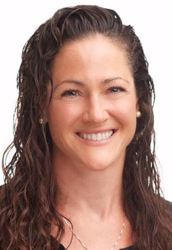New Playbook Helps Sponsors Implement Digital Technologies In Trials

By Ed Miseta, Chief Editor, Clinical Leader

The past month was a busy one for digital technologies and advances in remote patient monitoring. Amazon launched Halo, FitBit’s ECG app received FDA clearance, and the Apple virtual launch featured the health capabilities of the new Apple Watch 6. Amidst all of that news, it may have been possible to miss the launch of The Playbook, a new tool developed by DiMe (Digital Medicine Society), Elektra Labs, Koneksa Health, Genentech, MyoKardia, Sage Bionetworks and Scripps Research.
The Playbook is being billed as the essential industry guide for successfully developing and deploying digital clinical measures across clinical research, clinical care, and public health. I spoke with Jennifer Goldsack, executive director for DiMe, about the launch and what it means for sponsor companies conducting clinical trials.
Ed Miseta: If you work in clinical operations and are planning a trial that will incorporate digital health devices, it seems The Playbook is a tool to assist you in that journey. Is that how you would describe it?
Jennifer Goldsack: Yes, that is absolutely right. This is not intended to be an academic exercise. The Playbook is a very accessible how-to guide for our colleagues in pharma. It is applicable to those in clinical operations but also others working on public health initiatives, large public health challenges, and even pandemic response. As we look across these different contexts of use, you can understand the importance of having a single guide for those implementing digital devices. Something as simple as a heartbeat can be defined differently by different institutions and technologies when we measure it digitally.
For example, we do not think about blood pressure differently based on context of use. We measure it in the same way regardless of whether it is during a routine check-up or a clinical trial. So why should we think about it differently when using digital tools? The goal was to come up with an action oriented, comprehensive ‘how-to’ guide that walks users step-by-step through everything from selecting a digital measure to determining whether digital is the right technology to use. Then supporting them through measure development and deployment.
More and more companies are using these technologies in medical product development – DiMe’s crowdsourced library of digital endpoints currently lists 44 sponsors as actively using 137 unique digital endpoints. As that happens, we are seeing a wide array of questions and challenges come to the forefront. We try to tackle them all in The Playbook, providing a one-stop-shop for everyone working to advance remote monitoring.
Miseta: Prior to 2020 I was aware of companies dabbling in the digital space, but not many seemed to be jumping onboard. In March, when the pandemic hit, almost every company was looking for ways to gather data remotely. Historically, what have been some of the challenges companies faced when moving into digital devices?
 Jennifer Goldsack, Executive Director, DiMe |
Goldsack: There's obviously new expertise and new considerations that come in to play when you start integrating devices with sensor technologies. That requires a knowledge of what quality hardware is. There is also a complex science that turns unprocessed data into something that we can attribute a clinical condition or a clinical state to. A lot of the challenge was around how to create a common vocabulary and a common understanding of all the different components that need to be in place, as well as all of the different disciplines that need to be part of the conversation when we start to marry digital technologies with healthcare and health research.
You generally do not find hardware engineers in traditional pharmaceutical companies or CROs. Evaluating what a good sensor looks like is second nature to anyone who is trained as a hardware engineer. This is not new knowledge. It is just knowledge that is not widely known in the clinical sphere. The same is true of complex data science. People who have advanced degrees in data and computational science and knowledge of continuous data streams are out there. They know exactly how to show analytical validation, meaning what they claim to be measuring is indeed what they are measuring. But this knowledge is new for a lot of folks with a more traditional clinical background. So, confusion around what needed to be done and who you needed to collaborate with was certainly a challenge. To some extent, I think there was also a bit of a lack of trust. We are in a high-risk industry. Unless you are comfortable making those evaluations yourself, you must place a huge amount of trust into someone else's hands. That will always make trials a little bit riskier.
These are exactly the challenges that led us to launch DiMe, a nonprofit organization providing the professional home for experts participating in digital medicine to come together and advance the field.
Miseta: Tell us about The Playbook.
Goldsack: The Playbook is the comprehensive guide for anyone and everyone engaged in remote monitoring. I think it is approximately 404 slides. The Playbook has taken the job of incorporating digital devices into studies and turned it into a very manageable process. It is not a simple process, but that process is now well-defined. We now know what high quality looks like and we know who needs to be involved. The Playbook is an open access resource and we really think of it as a public good. It is also not static. We unveiled the first draft on September 16, 2020 and we are open for public comment. Thus far we have received some tremendous feedback and we are planning another tour of duty, which is a sprint of about four to six months to continue to advance this work.
We hope to continue to think about how we can make The Playbook as accessible and as impactful as possible to drive its broad adoption. It is available for immediate use and we have already heard of users having great success accessing it, using it, and distributing it to their teams. It is being used to inform conversations between the more traditional sort of clinical scientists, the clinical operations teams, and the vendor teams. It is already proving valuable, and it will continue to be maintained as a living document.
Miseta: You mentioned this is an open access resource. Is anyone able to access it, even if they are not a member of DiMe?
Goldsack: Exactly. DiMe is a thriving community of over 1,600 members across 43 countries and six continents. But we do not exist to bolster our numbers. We exist to support and drive the field. For that reason, we made this an open access resource available to anyone. I also want to recognize the vision of our collaborators – Elektra Labs, Genentech, Koneksa Health, MyoKardia, Sage Bionetworks, and Scripps Research – in supporting this open access approach. This is how we will improve the field, and they were all in right alongside us.
Miseta: Is The Playbook something users would read or something they would access as a reference guide as needed?
Goldsack: Definitely more of a reference guide. And I will add that what we are really proud of is how comprehensive it is. I expect many users will access The Playbook when they are selecting the right measure and thinking about how to ensure that the measure is meaningful to the patient population. At the same time, I think it remains valuable throughout the digital development and deployment lifecycle because there is the process of selecting and developing the measure as well as considerations around the technology itself.
But there are other questions for clinical researchers such as how does it fit into the clinical work? Does it become part of a hybrid design trial or a fully decentralized trial? How will this new data fit into the technology and documentation ecosystem? How do we make sure what we are doing is regulatory compliant? You can use this tool when deciding what you want to deploy, but it will also walk you through the operational considerations right up to the regulatory submission.
Additionally, we wanted to make this tool easily accessible. Over the next six weeks we will be offering educational sessions, The Playbook masterclass series, that dive into more discrete topics. The sessions are with experts who co-created the playbook and will walk participants through it. Recordings of those sessions will be made available on the site for on-demand viewing. Our goal is to quickly bring people up to speed by meeting them where they are. These classes started in September and will run through November 3rd.
Miseta: Who are the individuals that created The Playbook?
Goldsack: The effort was led by our organization and Elektra Labs, with the co-creators I noted earlier. It was a small but focused group that was quite representative of the field broadly. We were able to create The Playbook in about six months. This was obviously a huge undertaking. I mentioned that we want this to be a living document, and we will be looking to expand the group of collaborators to a much broader group. We hope that will help drive broad adoption and allow everyone to have a voice in defining what good looks like when we are thinking about digital clinical measures and remote monitoring across clinical research, patient care, and public health.
Miseta: Thank you for those insights. Any final thoughts?
Goldsack: We certainly hope The Playbook will be a go-to resource for clinical professionals who are considering the use of digital measures in their trials. The more we can get folks to rally around a common view of what good looks like, the easier it becomes to interact with vendor companies because they will be expecting the same questions. We all need to have the same shared vision of what good looks like. I think one of the challenges right now is the language around digital measures being a bit fractured. Right now, there isn't a common unifying language. That is what we hope to provide.
